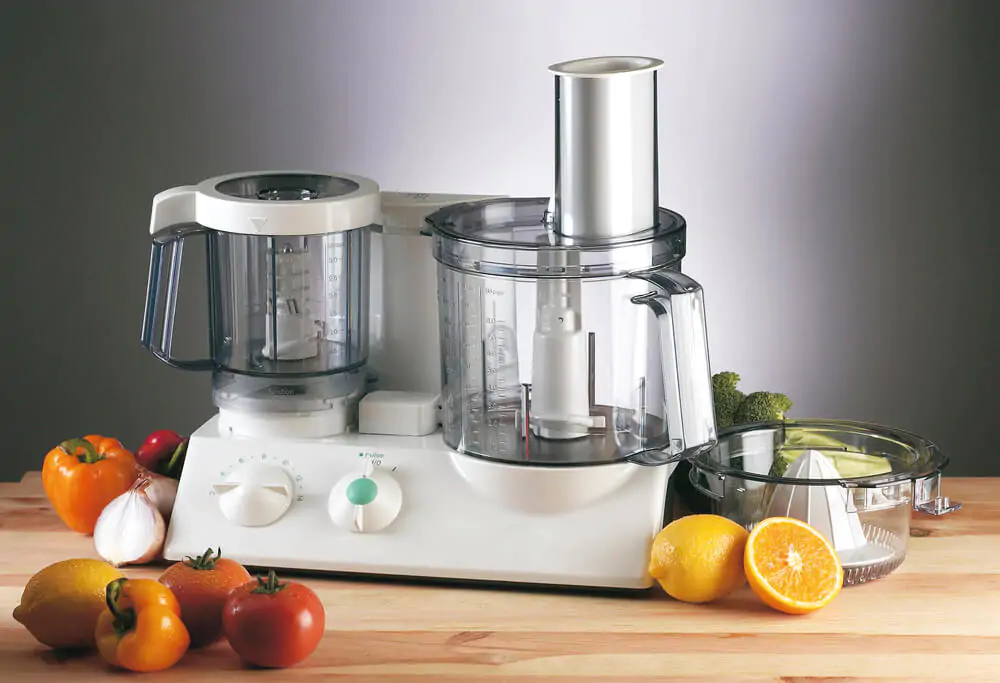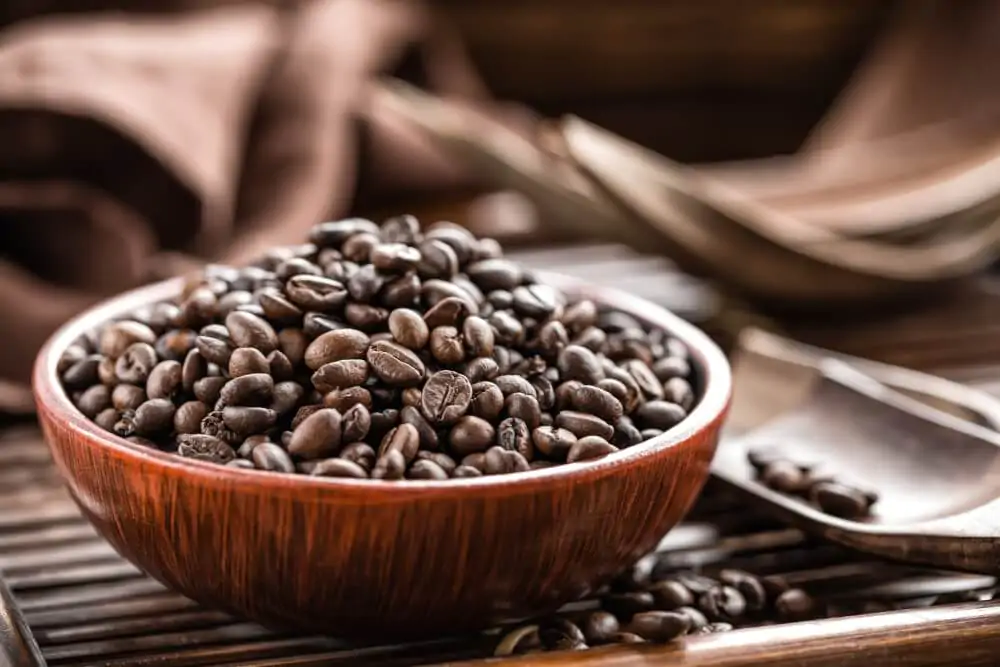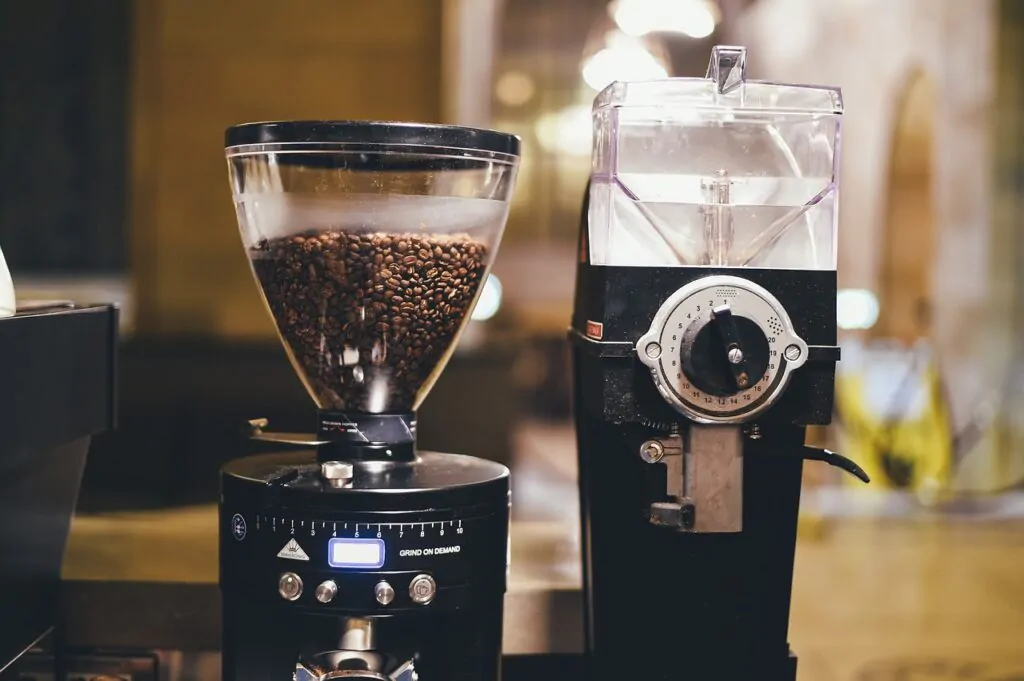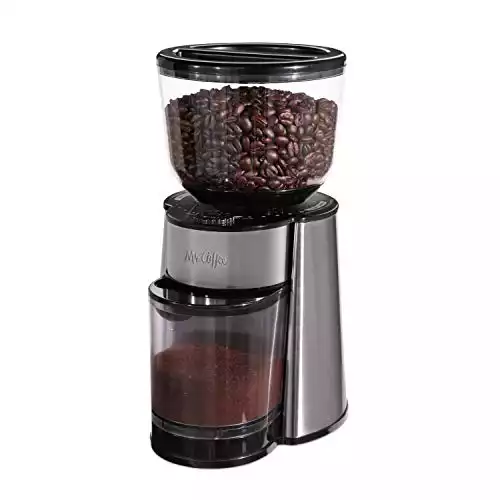Have you ever stood in your kitchen and thought,” Can you grind coffee beans in a food processor? “ Continue reading to find out more.

While shopping for different appliances can be fun, finding room to store several gadgets may be cumbersome. This was the case for me back in college and later lived in studio apartments.
Finding an appliance that can perform several functions is ideal. Food processors have sharp blades that can cut carrots and other hard vegetables. Luckily, they can also help us grind our coffee.
I have also mistakenly bought a bag of coffee that contained the whole bean instead of a fine ground. My food processor attachment certainly came in handy. Let’s learn more about grinding our coffee beans without a specific coffee grinder.
Is A Food Processor Good For Grinding Coffee Beans?

Are you still shopping around for a good coffee grinder? If you crave a fresh caffeine fix from your whole beans immediately, try using your food processor instead.
A food processor is an option, but “good” may depend on what we expect from ground size. It is hard for us to rely on the consistent fine ground with a food processor.
The type of processor that we have will also influence the ground size. Some blenders and processors have pulse settings – some don’t.
However, it is faster than using a rolling pin, hammer, mortar, and pestle.
What Is the Difference Between A Food Processor And A Coffee Grinder?

Coffee grinders evenly chop coffee beans. The process is much faster than in a food processor. The best grinders, such as Burr grinders, have two sets of blades.
A food processor chops, dices, and mixes many types of food. It has one main blade. While these appliances can help us with our coffee grinding needs, they require more time and elbow grease.
Due to the potential unevenness of food processed grinds, our cup of Joe from a real grinder usually tastes much better. The size of the ground affects how water extracts brew from it. To ensure we don’t start our busy days with a weak or bitter cup of coffee, we should opt for a grinder and save the processors for special sauces and smoothies.
How To Grind Coffee Beans In A Food Processor
- Place the whole beans in the food processor.
- Cover the lid very firmly.
- Depending on the model, you may have to physically tilt the processor side by side during the grinding process. The titling will help ensure all of the beans will grind in the blade. Or you may need to grind, remove the grounds, and reload them into the processor until you achieve your desired ground size.
- Make sure you don’t over-grind your beans – the coffee taste depends on it. Check the ground size after grinding in short bursts.
Thoughts On Grinding Coffee Beans With a Food Processor
There are numerous methods for grinding coffee into powder for brewing, ranging from something as basic as a mortar and pestle to hand-cranked grinders and mechanical marvels like automated burr grinders. All of these methods have something in common: they use pressure on the beans to get results.
Thanks to the high speed of the environment, it’s definitely possible to pulverize harder materials in a food processor. Still, there’s very little external pressure, and the pressure inside the food processor compartment is inconsistent.
- 18 Custom Grind Settings. Cord length : 24 inches
- Removable Bean Hopper
- Holds up to 1/2 Pound of Coffee Beans
- Removable Grinding Chamber ; Watts: 160
- Cord Storage.Dual safety-locking switches

